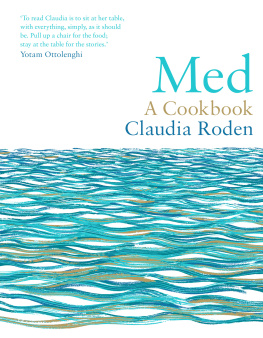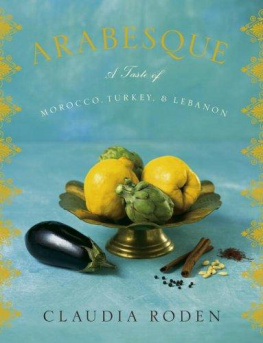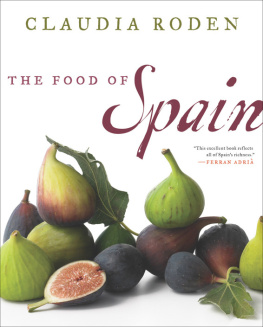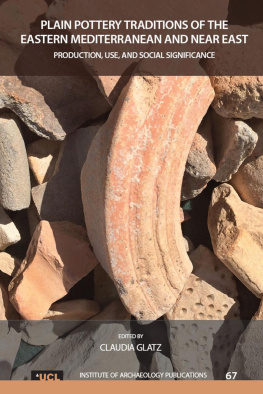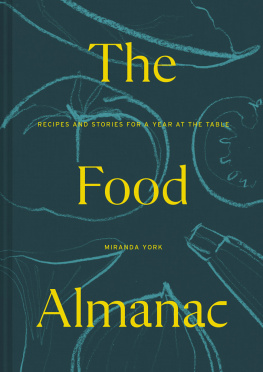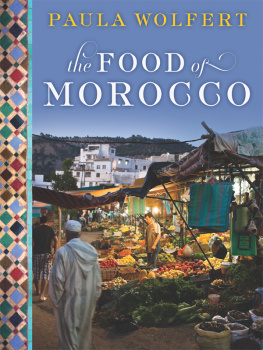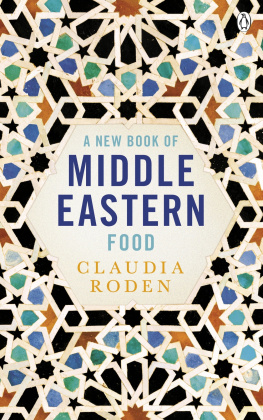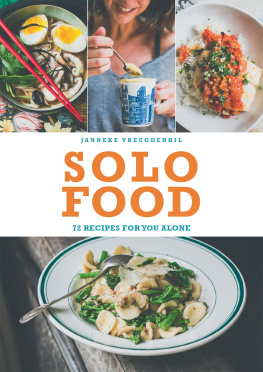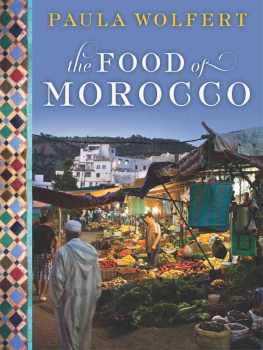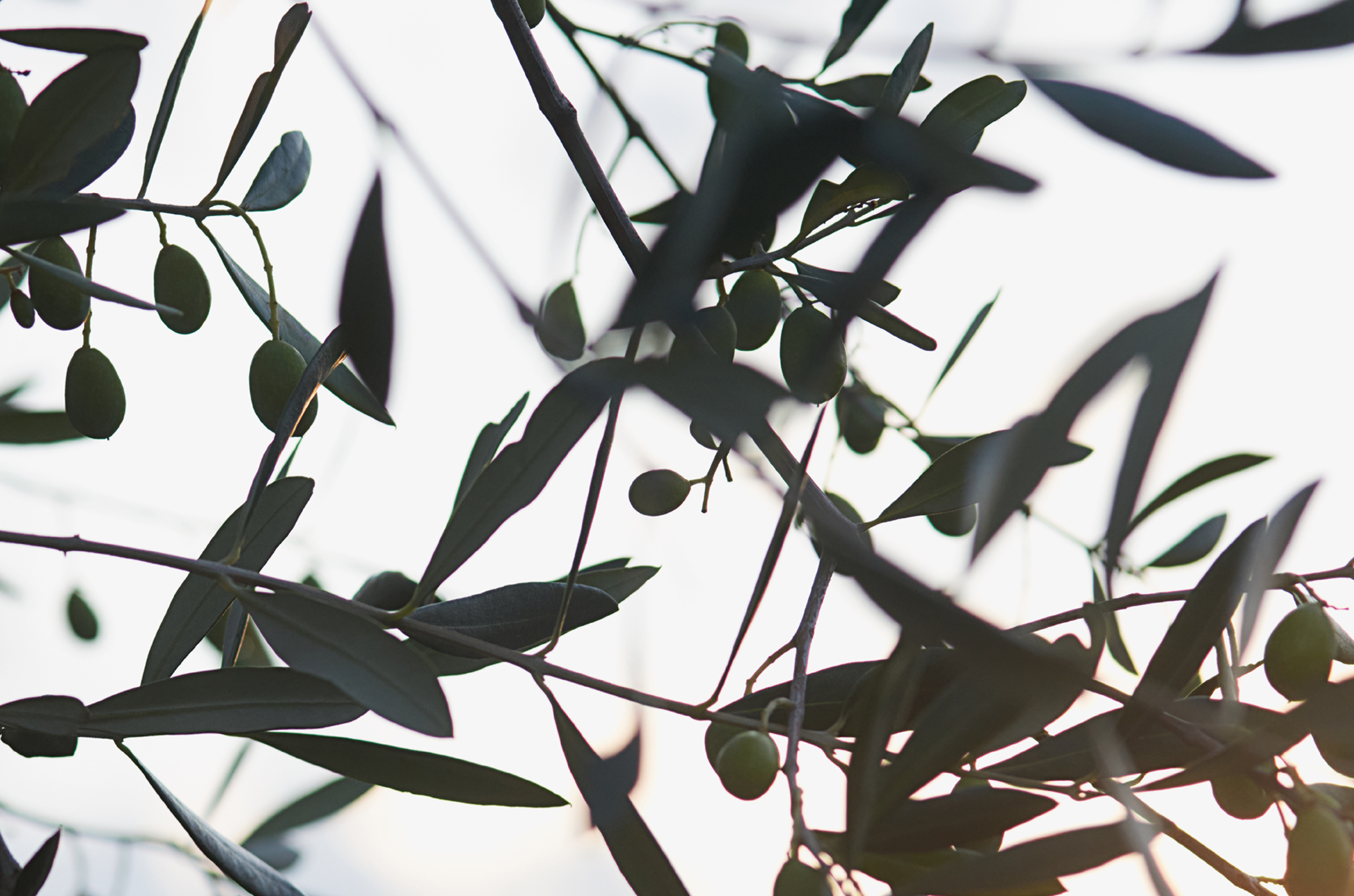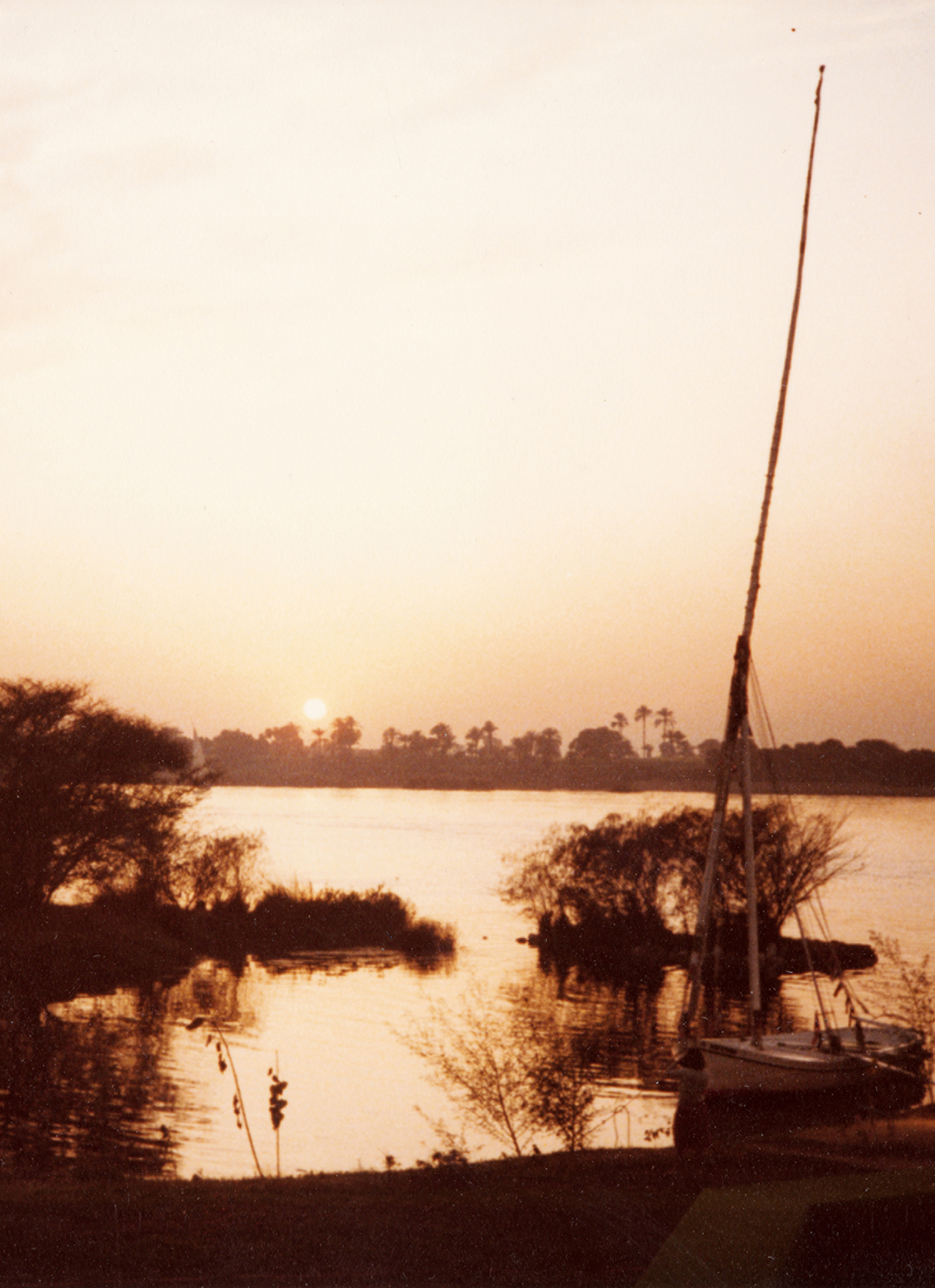Contents
Landmarks
Print Page List
ACKNOWLEDGMENTS
I thank the friends who came to dinner over the years and helped me choose the recipes that went into this book. My family have always been regulars at my table, and in the final months before handing in the manuscript, my children and grandchildren offered to test recipes. Everyone took to cooking passionately. Their names are in my dedication. Thank you all for your feedback and enthusiasm. You have helped make the book what it is.
My warmest thanks go to the friends far away who offered to test recipes. I appreciated their checking and comments hugely. Writer Adina Hoffman in New Haven, Connecticut, whom I got to know at Yale, also gave an American perspective. I often turned to her and her husband, poet Peter Cole, for general advice. Jonah Freud, who is translating Mediterranean into Dutch and is the owner of the best cookbook shop in Amsterdam, tested while on a canal journey in France. She is a fantastic cook and food writer, as well as a fount of culinary knowledge for chefs and food writers who come to her for advice. Gabrielle Sachs, who is married to my cousin Dov and lives in Bordeaux, is a cardiology nurse renowned for her cooking and the most passionate home cook I know. She brought a French lens to the recipes and was my super tester. I could hardly keep up with her requests for more recipes to try, and waited for her comments and suggestions, hoping for a Dlicieux! Dov a ador.
I am more grateful than I can say to my agent Lizzy Kremer for her warm friendship and unstinting support over many years, and for her encouragement, advice, and championing of this book. Thank you also for testing recipes, Lizzy; your comments were a great help. Working with you is a huge privilege and a joy. I thank Maddalena Cavaciuti, Lizzys assistant at David Higham, for testing, too. I valued her Italian know-how.
I am thrilled and delighted with the beautiful book that Ebury has produced, and thank Andrew Goodfellow, Lizzy Gray, Laura Higginson, and Celia Palazzo for wanting to make it the best it could be. I feel lucky and grateful to be published by you. I have special thanks for Andrew for the title, and for Celia, my editor, for making it all happen and for bringing together the dream team that created it. I have many thanks, too, for Emily Brickell, who took over when Celia left to have her baby.
I am full of admiration and especially grateful to Emily Preece-Morrison, indefatigable editor and project manager, for her care and dedication, for the brilliant way she captured the spirit of the book, inspired the creative team, and got it all to work. I thank copy editor Maggie Ramsay for her eagle eye and attention to detail; Frankie Unsworth, the amazing food and props stylist, for creating the feel of the Mediterranean for the shoots; and to her assistant Izy Hossack for the cooking.
I love Susan Bells lyrical photography. She has a magic touch. Her photos of food are both simple and seductive and make you want to cook. Her seascapes and scenery are moving and make you happy even if you cannot go there. I love Dave Browns engaging design and the way he used the sea and landscape and enmeshed the beautiful photos from all over the Mediterranean, some of them his own, in a poetic net. Thank you, Susan and Dave, for turning the book into a work of art.
I have many thanks, too, for the Ebury team who worked on the production, sales, and marketing of Mediterranean : Lucy Harrison, Stephenie Naulls, Claire Scott, Antony De Rienzo, and Fiona Atkinson; and for Vanessa Forbes and Anjali Nathani for deftly handling the foreign editions, Anjali also for setting up the Frankfurt Book Fair meeting.
I have huge thanks for Ten Speed Press for the splendid new American edition, for Lorena Jones for taking on the book, and my editors Emma Rudolph and Doug Ogan for making the conversions and Americanization and everything else happen so perfectly. I love Emma Campions beautiful warm evocative cover. I am grateful to production designers Mari Gill and Faith Hague, production and prepress color manager Jane Chinn, publicist David Hawk, and marketers Samantha Simon and Windy Dorresteyn. Thank you all. I am thrilled to be your author.
As I cooked through Mediterranean , I thought affectionately of people I got to know in different countries while researching their food, especially those who cooked for me, taught me, and showed me around. They allowed me into their lives and came into mine. I am still in touch with many we call, visit, and stay. I am forever grateful to them for enriching my life with so much more than recipes.
APPETIZERS
The pleasure of savoring bits of food with drinks in a relaxed way in convivial company is one of the joys of Mediterranean life. It is a tradition, a ritual, and an institution that was born in the world of bars, taverns, and cafs. But at home, too, there are traditions of hospitality where people offer something to eat with a drink.
The appetizers I grew up with are Middle Eastern mezze. When my father came home from work, we would sit on the balcony where we could see felukas (sailboats) gliding gracefully on the Nile, and Awad, our cook, would bring a tray of little things to eat. My parents had a glass of arak or whisky and nibbled at the food feta cheese, hummus, olives, pickles, radishes, and the like while we children would wolf it down before being stopped by Mother because we were having dinner soon. When my parents entertained their friends to play cards, every space in the apartment was filled with rented card tables, and a buffet included an enormous array of mezze.
I was always intrigued by the fantastical stories relatives told of a place called Zahl, a mountain vacation resort in the Bekaa Valley in Lebanon, where they ate an incredible variety of fabulous mezze. That mythical place stayed in my mind and in my dreams, so you can imagine my excitement when, a few years ago, I found myself stopping in Zahl for a mezze lunch on the way back to Beirut from a wedding near Baalbeck. Fergus Henderson of Londons St. John restaurant was at the wedding with his extended family, and I got a lift with his parents and sister and painter Ffiona Lewis. The menu was huge. I wished I could try everything. While I took notes of what we ate, Ffiona sketched the empty plates with remnants of food after we finished. A year later, she exhibited the resulting paintings (they are great) at a London gallery.
Zahl is now a town full of concrete housing overlooked by a giant statue of the Virgin Mary perched on the mountainside. There are vineyards around and arak is produced. According to legend, this is where the Arab mezze was born, in 1920, when the first two cafs opened by the river and started serving mountain village foods with the local arak. Gradually, the entire valley became filled with open-air cafs, each larger and more luxurious than the next, each vying with ever more varied mezze to attract customers who flocked from all over the Middle East.
What I learned in Zahl and elsewhere in the eastern Mediterranean and North Africa has inspired some of the dishes that I serve as a first course. What I serve with drinks I have learned from people at home, usually pures or pastes on little toasts or as dips, whose rich, strong flavors are meant to open the appetite. When you have a whole meal to prepare, you dont have time for elaborate appetizers. I always have something in the fridge, such as salami or other charcuterie, some cheese to cut up, and some olives and nuts, if someone should be around unexpectedly for a drink.

![Claudia Roden Claudia Rodens Mediterranean: Treasured Recipes from a Lifetime of Travel [A Cookbook]](/uploads/posts/book/289768/thumbs/claudia-roden-claudia-roden-s-mediterranean.jpg)
